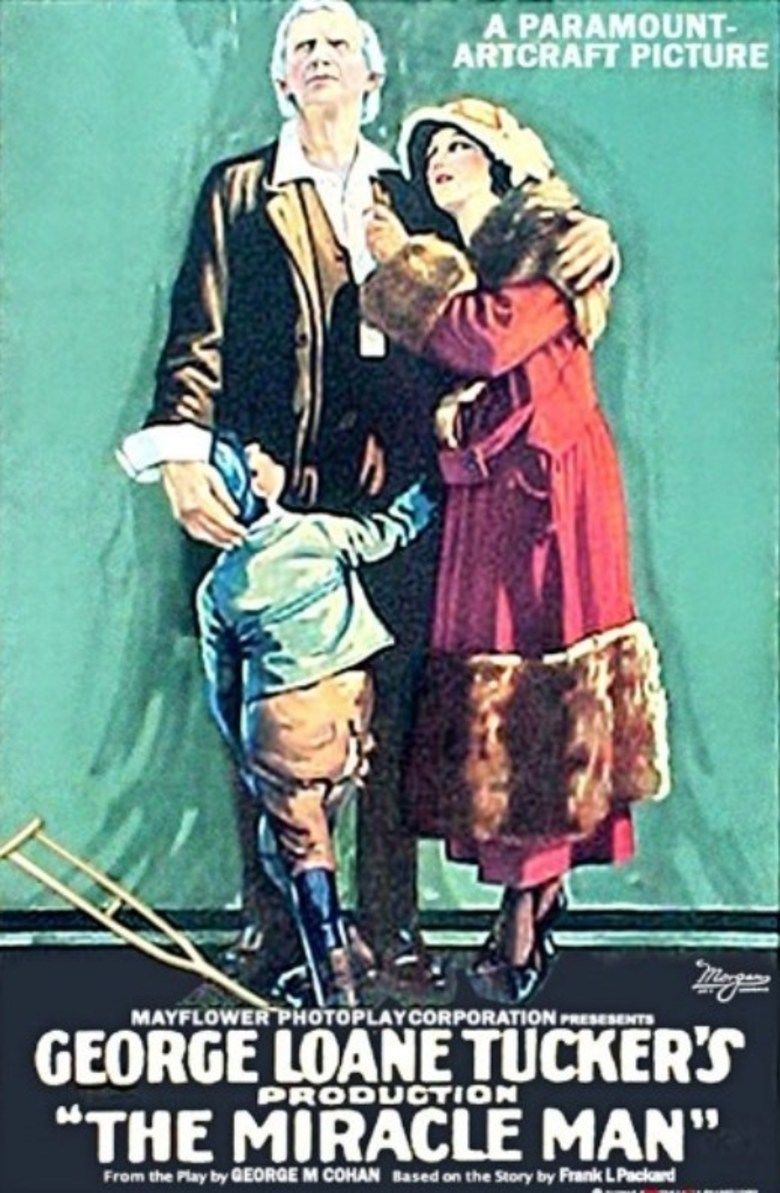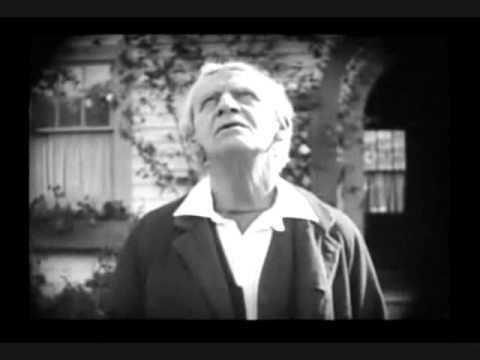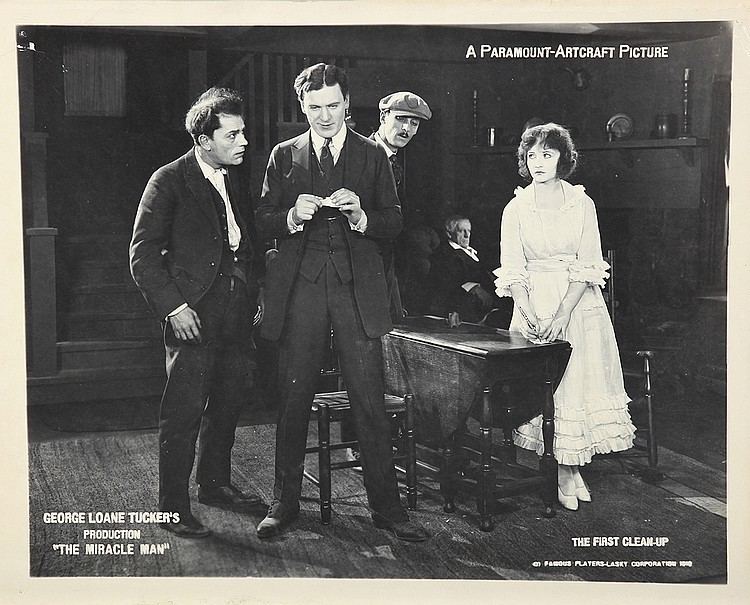The Miracle Man (1919 film)
6.2 /10 1 Votes
Budget 120,000 USD Country United States | 6/10 IMDb Genre Short, Drama Duration | |||||||||||||||||||||||||||||||||
 | ||||||||||||||||||||||||||||||||||
Language SilentEnglish intertitles Release date August 29, 1919 (1919-08-29) Writer George M. Cohan (play), Robert Hobart Davis (novel), Robert M. Davis (play), Wid Gunning (titles), Frank L. Packard (novel), George Loane Tucker Screenplay George Loane Tucker, George M. Cohan, Frank L. Packard Cast Lon Chaney (The Frog), (Rose), (The patriarch), J.M. Dumont (The dope), (Claire King), (Tom Burke)Similar movies Lon Chaney appears in The Miracle Man and Riddle Gawne Tagline The photoplay that reaches the soul | ||||||||||||||||||||||||||||||||||
Surviving footage of the miracle man 1919
The Miracle Man is a 1919 American silent drama film starring Lon Chaney and based on a 1914 play by George M. Cohan, which in turn is based on the novel of the same title by Frank L. Packard. The film was released by Paramount Pictures, directed, produced, and written by George Loane Tucker, and also stars Thomas Meighan and Betty Compson. The film made overnight successes of the three stars, most notably putting Chaney on the map as a character actor.
Contents
- Surviving footage of the miracle man 1919
- The miracle man lon chaney
- Plot
- Cast
- Background and production
- Reception
- Preservation
- Home media
- References

Paramount remade the film in 1932 also titled The Miracle Man with Hobart Bosworth, Chester Morris, John Wray, and Sylvia Sidney. Today, the majority of the 1919 film is considered lost, with only two fragments, totaling about three minutes, surviving.

The miracle man lon chaney
Plot

The film takes place in a small, New England town in 1919 (the Broadway play 1914), where a group of con men plan to use a faith healer to collect money.

In New York City's Chinatown, four crooks conspire to swindle a small, New England town. The gang consists of Tom Burke (Thomas Meighan), the head of the group; Rose (Betty Compson), a con artist posing as a street walker; "The Dope" (J.M. Dumont), who pretends to pimp Rose; and The Frog (Lon Chaney), a contortionist.

The plan is clear: in a small town outside of Boston there is a Patriarch (Joseph Dowling) who has been healing people. The group heads to the town and plans to use the Patriarch in a faith healing scheme. When the townspeople gather to see the Patriarch heal the sick, the Frog is there, posing as a cripple. As he crawls to the path of the man, his limbs become straightened and soon he walks to the Patriarch, supposedly healed. Unexpectedly, a crippled boy, his faith in the Patriarch overpowering him, loses his crutches and runs to the Patriarch.

The story spreads across the country (mostly on account of Burke), and people flock in from all over to visit the Patriarch and be healed. When a millionaire, Richard King (W. Lawson Butt), brings his sister to be healed, he gives Burke $50,000 after the Patriarch cures her. During this visit, King meets Rose, and the two fall in love.

Meanwhile, all is not well with Burke. One by one, he sees his gang disbanding, unbeknownst to him, the healing power of the Patriarch at work. The Dope gives up his drug addiction, The Frog gives up his life of crime and takes care of a widow left all alone, and Rose laments King's departure.
Burke becomes jealous, but when King returns to propose his marriage to Rose, she realizes that she loves Burke. The Patriarch dies, and the two lovers begin anew.
Cast
uncredited
Background and production
Initially intended as a vehicle for Meighan after he saw the Cohan play, Cohan sold the rights to the story to Paramount for $25,000. Packard sold the rights to his original novel for $17,500. George Loane Tucker had previously been hailed as one of the "first of the immortals" of film directors after his 1913 success, Traffic in Souls.
Lon Chaney was chosen by director George Loane Tucker, and this was his eighth film as a free-lance artist after leaving Universal Studios in 1918. His work in the William S. Hart picture, Riddle Gawne set him as a character actor of some notoriety, but it was The Miracle Man that would put both his acting and makeup skills (for which he was famous) to the test. Chaney auditioned for the part of The Frog in Tucker's office, grotesquely contorting his body. Tucker was reportedly "shaken" by the intensity of Chaney's performance.
This film version is more based on the novel than the stage play. However, neither the movie nor the stage play used the character names from the novel.
Reception
The Miracle Man was well received by both critics and audiences. Initially produced for $126,000, the film grossed an estimated $3,000,000 in theaters and became the second highest-grossing film of 1919. During the film's run at the Orchestra Hall in Chicago, (where it broke all house records), airplanes dropped free tickets and brass coins which read "The Miracle Man is here" printed on one side and "Have faith, keep this" on the other.
Because of the film's success, it launched its leads, Compson, Meighan and Chaney, into stardom. Meighan later went on to major leading roles while Chaney became one of the highest paid character actors in Hollywood until his death in 1930. Compson's name rose above the titles of most of the movies she made for the rest of the silent era. George Loane Tucker received critical success from the film and planned more, but only completed one more film before his death in 1921.
In 1920, Photoplay magazine held a "Letter Contest" polling their readers regarding their twelve favorite films. The Miracle Man ranked at #1, beating out Broken Blossoms, The Birth of a Nation, and The Kid.
Preservation
The majority of The Miracle Man is now lost. However, two fragments of the film survive: the first is a segment of one of Paramount's Movie Milestone series, Movie Memories (1935), showcasing the studios' greatest achievements. This clip shows both a segment from the conclave in Chinatown as well as the healing scene, which was praised by critics as one of the most powerful scenes yet put on film. A nitrate print of Movie Memories is reportedly at the UCLA Film and Television Archive but has not yet been preserved.
The second clip that survives is part of a short promotional film called The House That Shadows Built (1931) made for Paramount's 20th anniversary of its founding in 1912. This footage was used when a full print of the film still existed.
Home media
The documentary Movie Milestones with the surviving fragments was released from Blackhawk Films in 8mm format in the 1970s. These fragments were featured in the 1995 documentary Lon Chaney: Behind the Mask, produced by Kino International and included on the 2012 DVD release version of The Penalty (1920).
References
The Miracle Man (1919 film) WikipediaThe Miracle Man (1919 film) IMDb The Miracle Man (1919 film) themoviedb.org
